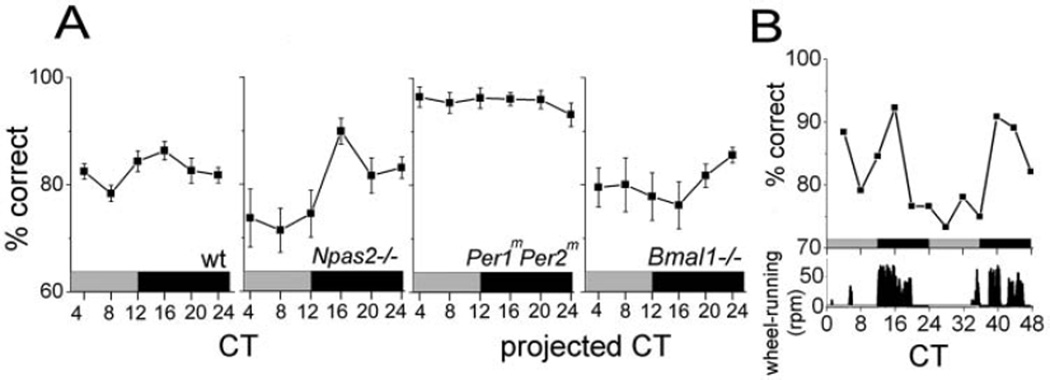Figure 1.
Circadian rhythms in olfactory discrimination. (A) Wild-type (wt) mice (n = 18) trained to detect vanilla diluted 400-fold showed a higher proportion of correct responses (mean ± SEM) during the early subjective night. Npas2−/− (n = 6) were also circadian, whereas Per1mPer2m (n = 5) and Bmal1−/− (n = 5) mice were arrhythmic. (B) Representative olfactory discrimination rhythms from one mouse (top) showed peak olfactory discrimination shortly after the daily onset of locomotor activity (bottom) over multiple days in constant darkness. The gray and black bars indicate subjective day and night, respectively.

